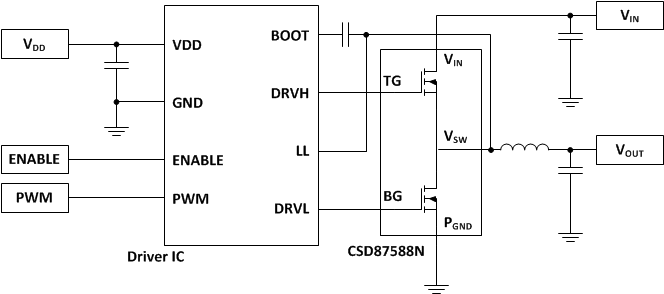SLPS384D March 2013 – April 2015 CSD87588N
PRODUCTION DATA.
- 1Features
- 2Applications
- 3Description
- 4Revision History
- 5Specifications
- 6Application and Implementation
- 7Layout
- 8Device and Documentation Support
- 9Mechanical, Packaging, and Orderable Information
Package Options
Mechanical Data (Package|Pins)
- MPA|5
Thermal pad, mechanical data (Package|Pins)
Orderable Information
1 Features
2 Applications
- Synchronous Buck Converters
- High-Current, Low Duty Cycle Applications
- Multiphase Synchronous Buck Converters
- POL DC-DC Converters
3 Description
The CSD87588N NexFET™ power block II is a highly-optimized design for synchronous buck applications offering high current and high efficiency capability in a small 5 mm × 2.5 mm outline. Optimized for 5 V gate drive applications, this product offers an efficient and flexible solution capable of providing a high density power supply when paired with any 5 V gate driver from an external controller/driver.
Ordering Information(1)
| Device | Media | Qty | Package | Ship |
|---|---|---|---|---|
| CSD87588N | 13-Inch Reel | 2500 | 5 x 2.5 LGA | Tape and Reel |
| CSD87588NT | 7-Inch Reel | 250 |
- For all available packages, see the orderable addendum at the end of the data sheet.

Typical Circuit |
Typical Power Block Efficiency and Power Loss |